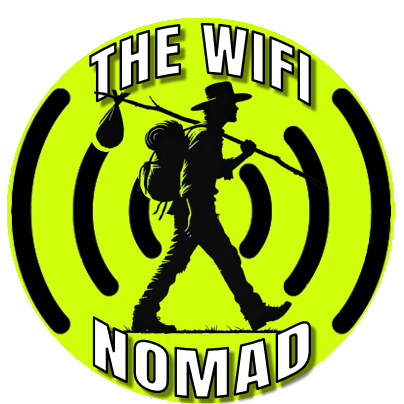I. Introduction
Have you ever stumbled upon a website so interesting that you spent way more time there than you planned? Maybe it was a blog full of delicious recipes or a page that taught you how to code your first video game. When that happens, you become part of what’s called website traffic.
Traffic, in the simplest sense, is the number of people who visit a particular site. If you’re trying to earn money online—especially through affiliate marketing—this concept is extremely important. Think about it like opening a lemonade stand on a busy street. Lots of people walking by means more potential lemonade buyers. The same goes for your website. Without visitors, even the best offer in the world won’t earn you a dime.
This article will kick off our series on traffic generation and affiliate marketing. You’ll learn what traffic is, why it matters so much for an online business, and how affiliate marketing ties in. By the end, you’ll understand why you need the right kind of traffic to make money, and you’ll be ready to dive deeper into specific strategies.
II. Explanation: Basics of Traffic and Its Role in Online Business
What Is Traffic?
Traffic is the flow of people who visit a website, whether it’s yours, a friend’s, or a giant online store. In digital marketing, each visitor represents a possible customer, a potential subscriber, or someone who might share your content. The more visitors you get—especially those who care about your niche—the higher your chances of making a sale or gaining a follower.
But traffic isn’t just a numbers game. One thousand random visitors may not be as useful as one hundred visitors who love exactly what you offer. If your blog is about home gardening, for instance, visitors who also enjoy growing plants are more valuable than people who prefer snowboarding. This quality factor is what makes traffic so interesting and, in some cases, challenging.
Role of Traffic in Online Business
Let’s connect traffic to the idea of running a successful online venture. Whether you’re selling handmade crafts, offering online courses, or doing affiliate promotions, people need to see your content. Without consistent traffic, your products or affiliate links remain hidden, and nobody can buy what they can’t find.
In today’s world, having a strong online presence is critical. Businesses—both large and small—fight to show up at the top of search engine results. Social media influencers work hard to stand out in crowded newsfeeds. Bloggers often pour hours into writing posts that rank well. These efforts all point to one core goal: driving the right traffic to their websites.
Why Quality Over Quantity Matters
You might hear someone brag, “I got 10,000 page views this week!” But if those 10,000 visitors are uninterested in the content or products, the impact might be minimal. Quality traffic means people who genuinely care about what you’re offering. If you run a fitness blog, a handful of serious fitness enthusiasts can be more valuable than hundreds of random passersby who click away after a second.
Quick Question: Think about your own browsing habits. Have you ever found a blog that matched your interests perfectly, causing you to stay much longer than usual? That’s what “quality traffic” feels like.
III. Affiliate Marketing and the Traffic Generation Process
Basics of Affiliate Marketing
Affiliate marketing is a simple concept that has changed the way people earn money online. Here’s how it works:
- You choose a product or service you believe in (or think your audience will love).
- You share a special link—called an affiliate link—with your readers or viewers.
- Someone clicks the link and buys the product.
- You earn a commission for helping make that sale.
It’s like recommending a cool gadget to a friend, except when your friend decides to buy it, the store gives you a small “thank you” fee.
One of the biggest benefits is that you don’t need your own product. Instead, you focus on traffic generation and building trust so people are more likely to click and purchase. Some affiliate marketers promote everything from camping gear to digital courses. Others focus on specific niches like vegetarian cooking, makeup tutorials, or even dog training.
How Affiliate Marketing Relies on Traffic
No matter how awesome the product you’re promoting is, you won’t earn anything if no one clicks on your affiliate links. This is why traffic is essential. Each visitor is a potential buyer. Affiliate marketing success depends on attracting visitors who are more likely to follow through and buy.
- If you have a high-traffic blog about vegan recipes, you can add affiliate links for cooking tools or plant-based cookbooks.
- If you run a YouTube channel about computer gaming, you might share affiliate links for gaming chairs or keyboards.
The key is relevance: match the product with the audience, and you’ll see better results.
A Common Misconception
Many beginners think affiliate marketing is an “easy money” scheme. They might see headlines like, “Earn $10,000 a month from your living room!” But the truth is, it requires real work. You have to build your site or platform, consistently produce useful content, and figure out how to reach the right audience. It’s not just about having a link; it’s about creating a reason for people to trust your recommendation.
IV. Introducing Different Types of Traffic
Knowing what traffic is and why it matters is a great start. But not all traffic flows from the same source. Let’s break down the main types you’ll encounter in your digital journey:
- Organic Traffic
- Definition: Visitors who find your site through unpaid search results on platforms like Google or Bing.
- Key Advantage: This can be a steady, long-term source of visitors, especially if you practice good SEO (Search Engine Optimization).
- Example: A blogger ranking for “best hiking backpacks” sees consistent traffic from outdoor enthusiasts.
- Paid Traffic
- Definition: Visitors who arrive after you pay for an ad (e.g., Google Ads, Facebook Ads).
- Pros: You can reach people quickly and target specific interests.
- Cons: It costs money. If you stop paying, traffic might drop.
- Example: An online store that runs ads on Instagram to showcase new clothing lines.
- Social Traffic
- Definition: Visitors coming from social media platforms like Facebook, Instagram, Twitter, or Pinterest.
- Why It’s Powerful: A single viral post can bring thousands of clicks overnight.
- Tip: Consistent posting and engagement help maintain a steady flow of visitors.
- Referral Traffic
- Definition: Traffic from links on other websites.
- Example: A food blog links to your baking tutorial, and their readers click over to your site.
- Value: Often high-quality, since these visitors are already interested in your topic.
- Direct Traffic
- Definition: People who type your website URL directly into their browser or click a bookmark.
- Significance: Typically your most loyal audience—friends, family, or returning customers.
- Note: Building brand recognition helps increase direct traffic over time.
Quick Question: Do you notice where you land the most when you’re browsing? Do you mostly come from search, social media, or a saved bookmark?
V. Step-by-Step Guide: Understanding Your Traffic Goals
Before you start seeking thousands of visitors, it’s smart to define your traffic goals. Not all traffic is equal, and you need a plan for how and why you’re bringing people to your platform.
Step 1: Identify Your Audience
- Ask Yourself: Who am I talking to?
- If your focus is on cooking, are you aiming for busy parents, gourmet chefs, or college students with little time? Clarifying your audience shapes your entire strategy.
Step 2: Choose a Niche or Topic
- Niche Example: “Healthy cooking for busy parents” is more specific than “cooking.”
- A narrower focus helps you stand out. You’ll have less competition and more targeted traffic.
Step 3: Pinpoint Potential Traffic Sources
- Do you plan to rank on Google with SEO?
- Would you rather learn the ropes of Facebook Ads or Pinterest?
- Picking one or two sources to master at first can help you avoid overwhelm.
Step 4: Plan for Consistency
- Consistency is huge. Posting one article and forgetting your blog for six months won’t get you far.
- Whether it’s writing a weekly blog post or sharing daily tips on Instagram, create a schedule and stick to it.
Take a moment to write these steps down in a notebook or on your computer. They’ll keep you on track as you read the rest of our series.
VI. Real-World Example: How Traffic Fuels Affiliate Earnings
Let’s look at Sarah, who started a blog about DIY crafts. Sarah noticed she spent hours browsing craft stores, buying new supplies for her projects. She figured there must be other people out there who love making fun decorations at home.
- Choosing Her Niche: Sarah decided to focus on “simple DIY crafts for beginners.” She targeted people who want easy, affordable projects.
- Content Creation: She shared step-by-step tutorials with lots of pictures—things like making paper flower bouquets or homemade holiday cards.
- Leveraging Pinterest (Social Traffic): Every time she finished a tutorial, she created a pin featuring her final craft result. Pinterest users love visuals, and many people found her blog through these pins.
- Adding Affiliate Links: She signed up for an affiliate program selling craft supplies. In each tutorial, she mentioned the glue gun or special paper she used, linking to the store.
- Traffic to Sales: As people clicked on her pins and visited her blog, they sometimes purchased the craft items she recommended. Sarah began to earn small commissions. Over time, she repeated the process and scaled her earnings.
Key Takeaway: Sarah’s consistent traffic flow—mostly from Pinterest—allowed her to monetize her blog through affiliate links. She didn’t rely on random clicks; she targeted people who were already eager to learn DIY crafts.
VII. Actionable CTA (Call-to-Action)
Take Action Right Now:
- Write down three topics or niches you’re passionate about.
- Pick one that you can see yourself talking about for the long run.
- List two traffic methods you might explore (e.g., blogging for organic SEO, Pinterest marketing, or Facebook Ads).
Once you have these details, you’ll be ready to dive into more specialized techniques. Trust me, having a clear direction makes all the difference when you start building momentum.
VIII. Link to Next Article
Up next, Article 2: Understanding Free Traffic. In this article we’ll focus on free traffic strategies with an emphasis on blogging and SEO. You’ll learn how to optimize your content so that search engines like Google show it to people who are actively searching for what you offer. Get ready to craft engaging blog posts, master basic SEO techniques, and lay the groundwork for long-term success—without spending a dime on ads!
Final Thoughts
Traffic is the lifeblood of any online business or affiliate marketing journey. You can’t sell a product or get clicks on your links if no one’s around to see them. By understanding the basics—what traffic is, how it ties into affiliate marketing, and the different ways you can generate it—you’re already miles ahead of many beginners.
But remember, simply knowing about traffic doesn’t guarantee success. Implementation is key. You have to pick your niche, plan your traffic sources, and keep going even if it feels slow at first. Building an online presence is like growing a plant: you need the right seeds (niche), good soil (platform), and consistent watering (content creation and marketing) to help it thrive.
If you’re ready to take the next step, grab a notebook or open a new document and start fleshing out your own traffic goals. Once that’s done, move on to our second article, where we’ll help you take advantage of free traffic through blogging and SEO. You’ll learn how to position your content so more people discover it organically, giving you a reliable audience to share your affiliate offers with.
Thanks for reading, and stay tuned for more insights on how to drive the right traffic and grow your affiliate marketing income. See you in the next article!


